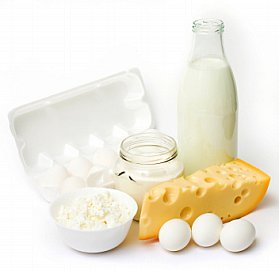Spring just seems to be the time to freshen up a bit after a long, dark stretch of weather. Ever notice how the number of garage sales, the urge to clean your closets, and some people’s desire to tidy up the yard all seem to increase as the temperature does? This all got Steiffgal thinking about “spring cleaning” in relationship to Steiff collectibles. When should an item be professionally cleaned and/or restored? To learn more about these important topics, Steiffgal spoke with a experienced restorer, Martha Anderson, of Mar-Ke Mohair. Martha specializes in the repair and restoration of collectible and antique mohair teddies and toys.
Steiffgal: Martha, first of all, thanks for sharing your expertise with our great readers. Would you be so kind as to tell us a little about yourself, if you are a collector, and your experience with restoration.
Martha: I started collecting bears when I was in college. My collection grew slowly. When I met my husband, he encouraged my hobby and even bought me some Steiff pieces. Fast forward a few years, my mom was helping her friend clean out a family member’s attic in 1982. They found a bear folded into a hat box; he turned out to be a 24″ blank-button Steiff. He needed major restoration, and I wanted to do it myself. It took me two years but I was finally able to get the work done. That bear is Ted; he is still my pride and joy and is pictured on my website. He has the sweetest expression! My collection has grown to include many animals, not just bears.
(The before and after pictures above show how Martha’s restorative talents can bring a family’s Teddy bear literally back to life!)
Steiffgal: So clearly you understand the love and passion that collectors have for their Steiff treasures. Now, can you tell us what exactly is “restoration”?
Martha: Restoration is the process of bringing something back to its original condition. In the world of stuffed animals it is more a process of preservation. If you have a lovely mohair bear, but it is dirty and losing stuffing, it needs to be restored in order that it can continue to be enjoyed for years to come.
Steiffgal: What types of services can you provide to collectors with an item in need of restoration?
Martha: There are many things that I can do to bring a special item back as closely to its original condition as possible. These include cleaning; paw pad repair or recovering (Steiff felt paw pads and hands often need this treatment); restuffing part of, or the entire item; and the repair or replacement of noses, eyes, mouths, ears, joints, and even squeaker and growlers. Sometimes, I need to make entirely new body parts for a beloved collectible, usually due to pet damage.
(The before and after pictures above show how Martha cleaned and repaired a terrible facial gash on a beautiful Steiff Teddy bear.)
Steiffgal: Wow, I didn’t realize the spectrum of repair work that is possible. Given all those options, when would you recommend restoring something?
Martha: If a toy’s condition can be improved to help it last longer, then I feel it should be restored. My biggest recommendation is cleaning. Some collectors feel that if their toy looks dirty, it looks old and that they like that look. However, would you let your friends track sand all over your favorite Oriental rug? Probably not; you would want to get the dirt out of the fibers to help the rug last. Mohair is a natural fiber that is long lasting, as long as it is clean and not exposed to bugs and direct sunlight. It is important to note that true restoration does not do anything that would in any way diminish the special personality of a toy.
(The before [on the left] and after [on the right] pictures above show how Martha pieced back together and restored a Steiff reclining lion that was “attacked” by a family pet.)
Steiffgal: Yes, that is a great point for us all to understand about restoration. So, what cannot be “fixed” via restoration?
Martha: Toys that are dry-rotted cannot be fully restored. Though I have worked on some severely dry toys, it usually by special request by the owner and often costs quite a bit more than the toy is worth.
Once in awhile, I am asked to do work on an item concerning its Steiff “button in ear.” I personally cannot put new – or old – Steiff buttons back into toys where the original is missing. Steiff buttons are a trademark of that company and they do not offer replacements. I have had people contact me to ask me to install old Steiff buttons that they have removed from old worn toys into a different toy. I will not do this, as I feel it is not ethical.
Also, although reweaving is possible, I personally do not do it. This process of putting new fur (mohair) into the fabric backing is a tedious job and my carpal tunnel hand condition will not allow me to do it. There are artists that perform this service, but it is upwards of $325 per square inch.
Steiffgal: Here’s a question I am certain many readers are thinking about now… does restoration change the value or resale value of an item?
Martha: This is a difficult question! There will always be collectors that only want the worn and dirty toys, and those that want their toys clean and repaired. I can only go by what my customers tell me. I have been told that restored toys bring more money than those that are not, as a clean and stabilized toy will last much longer than one that is not.
Steiffgal: I am sure that you have wonderful stories about the power of restoration. Can you share one that is particularly meaningful with us?
Martha: Yes, of course. Here’s one that really touched my heart. A man contacted me about restoring his mother’s beloved toy. The bear was dry, faded, and had been attacked by the family dog. The mother has recently moved to a nursing home and the son felt it would be nice for her to have her bear with her in her new surroundings. I immediately started to work on the bear, but the mom passed away before I could finish the project. The son was quite moved when the bear returned, and was so happy to have this “piece of his mom” to cherish for years to come. Some family members had tried to throw the bear away!
Steiffgal: Wow, and you were able to contribute to her memory with the gift of restoration. What a wonderful deed! Martha, the readers and I thank you for your time!
Steiffgal hopes that this interview with Martha has given you a clean slate on your view on restoration!
Have a question about one of your Steiff treasures, regardless of its condition? Let’s talk! Click here to learn more.














